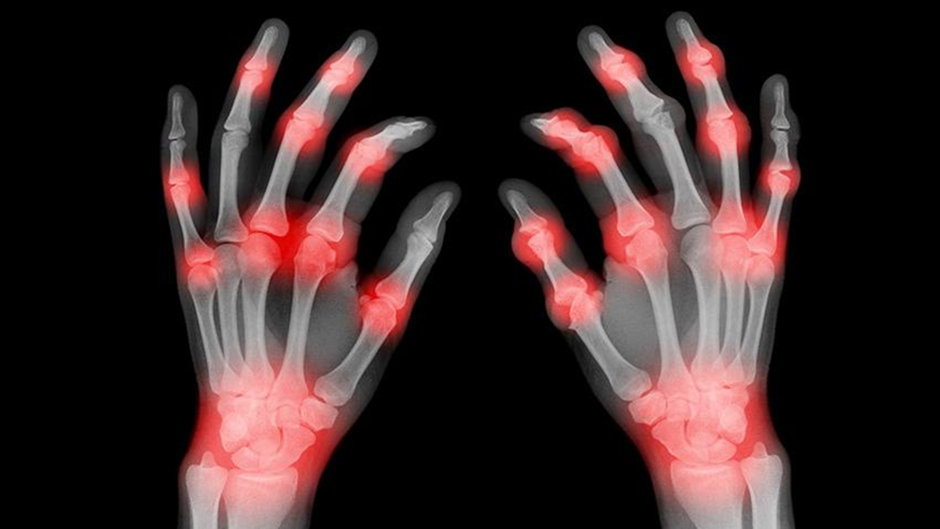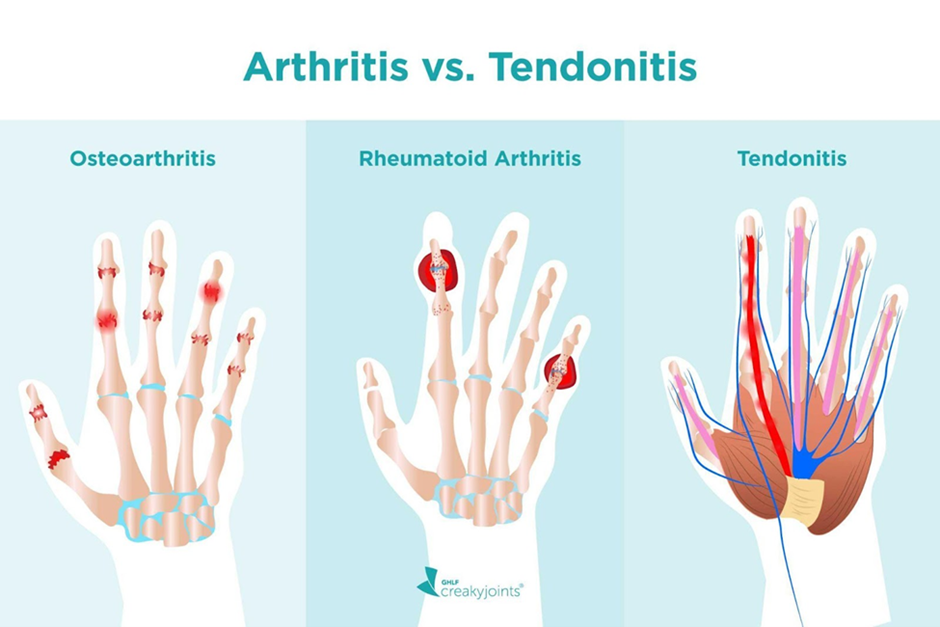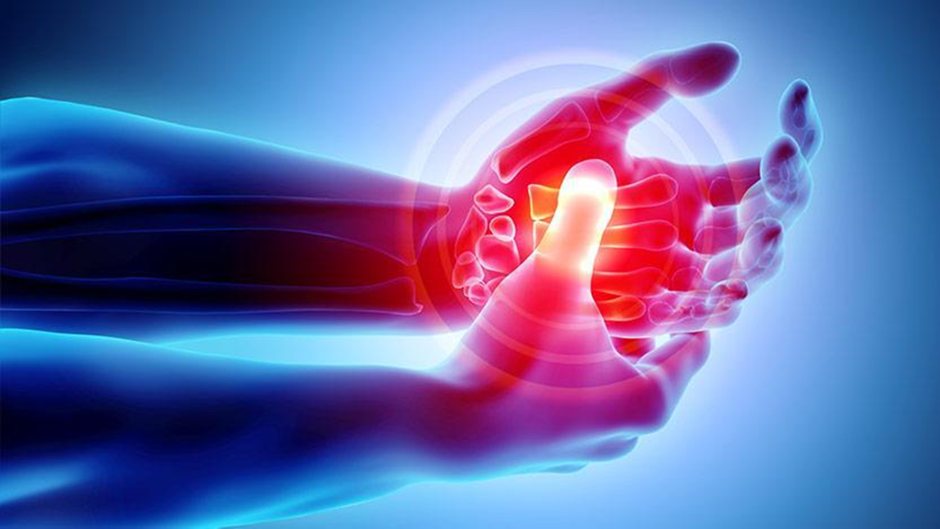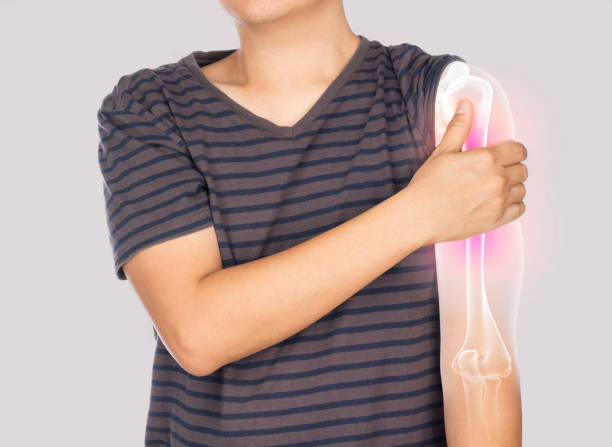What age does arthritis start?
Arthritis can start between 40 and 60 years of age.
In medical terms, arthritis describes the state of an inflamed joint. The term generally refers to the damage caused to joints of your body, including your hand and wrist. Bear in mind that your hand and wrist have up to 36 joints. Plus, these two body parts have several sites prone to arthritis. So, pain and stiffness may be signs of arthritis in the hands.
The most common form of arthritis in the hands is osteoarthritis. This condition causes a degenerative breakdown of your joints over a given period of time. This type of arthritis can affect the CMC joint located at the base of your thumbs.
Less common types of arthritis in hands and wrists include post-traumatic arthritis (damage to the joints due to injuries) and inflammatory arthritis (caused by gout, psoriatic or rheumatoid arthritis).
With proper diagnosis and hand arthritis treatment, you can still overcome arthritis pain in the hands, wrists, fingers, and thumbs. All you need is to seek medical help from your doctor, and everything else will help restore the condition of your hands in general.
Dr. Christopher R. Sforzo & Dr. Christopher L. Dillingham at Sforzo l Dillingham l Stewart Orthopedics Sports + Medicine will certainly provide expert hand arthritis treatment to ease pain and promote the functionality of your fingers. The doctors are board-certified orthopedic surgeons and fellowship-trained medical professionals to perform hand, wrist, and upper extremity surgical procedures.
Both Dr. Sforzo and Dr. Dillingham provide expert care in treating problems associated with shoulders, arms, wrist, hands, and forearms. In addition, they perform many surgical procedures using minimally invasive techniques such as arthroscopic rotator cuff repair, arthroscopic carpal tunnel release, as well as, arthroscopic hand, elbow, and wrist procedures.
Your hand contains approximately 19 bones. This number does not include the bones that make up your wrists. In total, there are up to 14 phalanges or bones that form your fingers. Three phalanges are found in each finger, starting from the index to the pinky or small finger. Each thumb has two phalanges. In addition, there are five metacarpal bones in the middle part of each hand.
Apart from bones, your hands consist of numerous ligaments. The main function of these ligaments is to form a strong connection between bones. There are also several tendons in your wrists and hands. Tendons act as a connection between muscles in your hands or arms and the bones. This connection enables you to move your fingers freely.
Nerves are also part of your hand anatomy. The nerve endings are located in your fingertips. Nerves play an active role in providing the much-needed sensation in your fingers and hands. Veins and arteries work together to facilitate the essential flow of blood in and out of your hands, fingers, and wrists.
The other part of hand arthritis anatomy is the wrist anatomy. The wrist is among the most complicated joints in your body. It has up to eight bones known as carpals. Your carpals form two rows within the wrist. The lunate, scaphoid, and triquetral bones move concurrently with your arm bones. The trapezoid, trapezium, hamate, and capitate bones are all connected to the bones of your palms.
Ligaments form a connection between carpal bones, while the tendons create a connection between your fingers and thumb and the forearm muscles. Extensor tendons on your wrist’s back help straighten your fingers. Flexor tendons are on the palm side of your wrist, enabling you to bend your wrist and fingers with ease.
Blood vessels and nerves are also part of your wrist anatomy. The vessel and nerves pass through your wrist. In general, the bones, muscles, tendons, and ligaments provide your wrists and hands with an exceptional range of motion.

Arthritis in the hands and wrists affects many people regardless of gender and status. In this regard, you are at risk of getting arthritis if you fall into any of the following categories of people:
Older People: If you are older, you have a great chance of developing arthritis of the hand and wrists, including the fingers. Osteoarthritis is common in people aged above 50 years. Rheumatoid arthritis, however, typically appears in people aged between 35 and 50 years.
Women: More women than men are at risk of developing arthritis of the fingers, hands, and wrists.
Overweight: Being overweight can contribute to arthritis in your hands or chronic arthritic finger pain.
Injuries: If you have ever had injuries to your hand, fingers, or wrists, you are more likely to develop arthritis in your hands. Likewise, if at one time you dislocated or broke any joints in your wrists, fingers, or hands, you are at a greater risk of getting arthritis.
Genetic: You may develop signs of arthritis in your hands, wrists, and fingers due to genetic inheritance. Typically, most people with arthritis of the hand inherit genes known to cause arthritis in their fingers, hands, and wrists.

The most common types of hand arthritis are osteoarthritis, rheumatoid, and psoriatic arthritis. Others include post-traumatic arthritis, gout, and lupus. Any of these forms of arthritis can cause serious damage to your hands, wrists, and other joints. Below is a brief explanation of the top three types of hand arthritis:
Commonly referred to as OA, osteoarthritis is degenerative arthritis that affects the hands and wrists. OA is also called “wear and tear” arthritis and is more prevalent in older adults than young individuals. About 50% of women and 25% of men develop osteoarthritis in their hands upon reaching 85 years old.
OA affects joints in your hands and fingers. The most common joints that are prone to OA include:
Rheumatoid arthritis is referred to as RA. It is a systematic inflammatory disease that makes your immune system attack your organs and joints. RA is likely to cause permanent joint deformities unless managed and treated at the right time.
It is not yet clear what causes RA, but genetics play a significant role in increasing the chances of someone developing it. Risk factors such as female sex, age (between 30 and 60), strong maternal history of the inflammatory disease, obesity, smoking, and previous bacterial and viral infection are known risk factors that contribute to RA.
Psoriatic Arthritis or PsA is a chronic inflammatory condition that affects the joints. PSA is usually common among people with psoriasis. This form of arthritis affects larger joints such as wrists and knees. It also affects the big toe, hands, and finger joints.
Like RA, the real cause of PsA is still unknown, although genetics play an integral role in this health condition. PSA is characterized by joint pain, arthritis in one finger, swelling, and stiffness.

Arthritis in hands symptoms include:

Your doctor will perform a complete history and physical exam to help make your arthritis diagnosis, as well as possibly order one or more of the following tests:
After undergoing a successful diagnosis of your arthritis disease, your doctor will decide on any of these two treatment options:
Different types of hand arthritis are known today. Generally, this condition is characterized by persistent pain and stiffness in the hand. This makes it difficult for you to perform your daily activities. Both pain and stiffness are signs of arthritis that you should not ignore. Therefore, seek medical attention at the right time to avoid future complications. For additional information on arthritis of the hand and wrists, please contact Sforzo | Dillingham | Stewart Orthopedics + Sports Medicine.
Arthritis can start between 40 and 60 years of age.
Any form of arthritis is generally unpreventable. But you can reduce its risk by changing all risk factors associated with it.
It will depend on your procedure, but generally, it takes between two and four months to experience a full recovery, although it can take several months or a year to reach your full potential.
Arthritis in the hands is brought about due to inflammation and damage to your hand joints. It causes pain and stiffness. Carpal tunnel syndrome occurs due to nerve compression. Its symptoms are numbness and tingling in the fingers and thumb.
The first signs of arthritis in fingers include burning joint pain, stiffness in your finger joints, and swollen joints.
As healthcare is ever changing, Sforzo | Dillingham | Stewart Orthopedics + Sports Medicine, is doing things differently…






